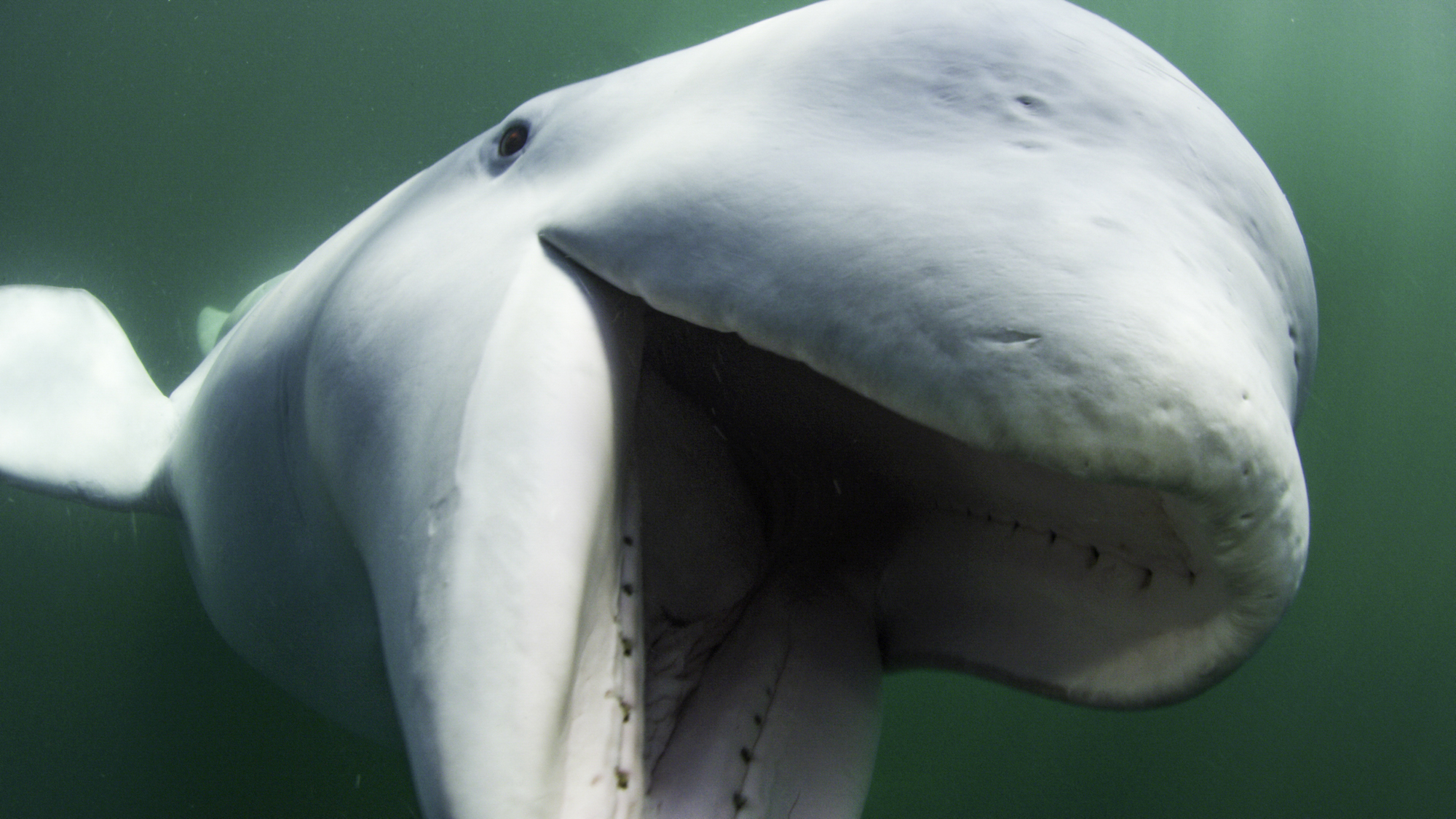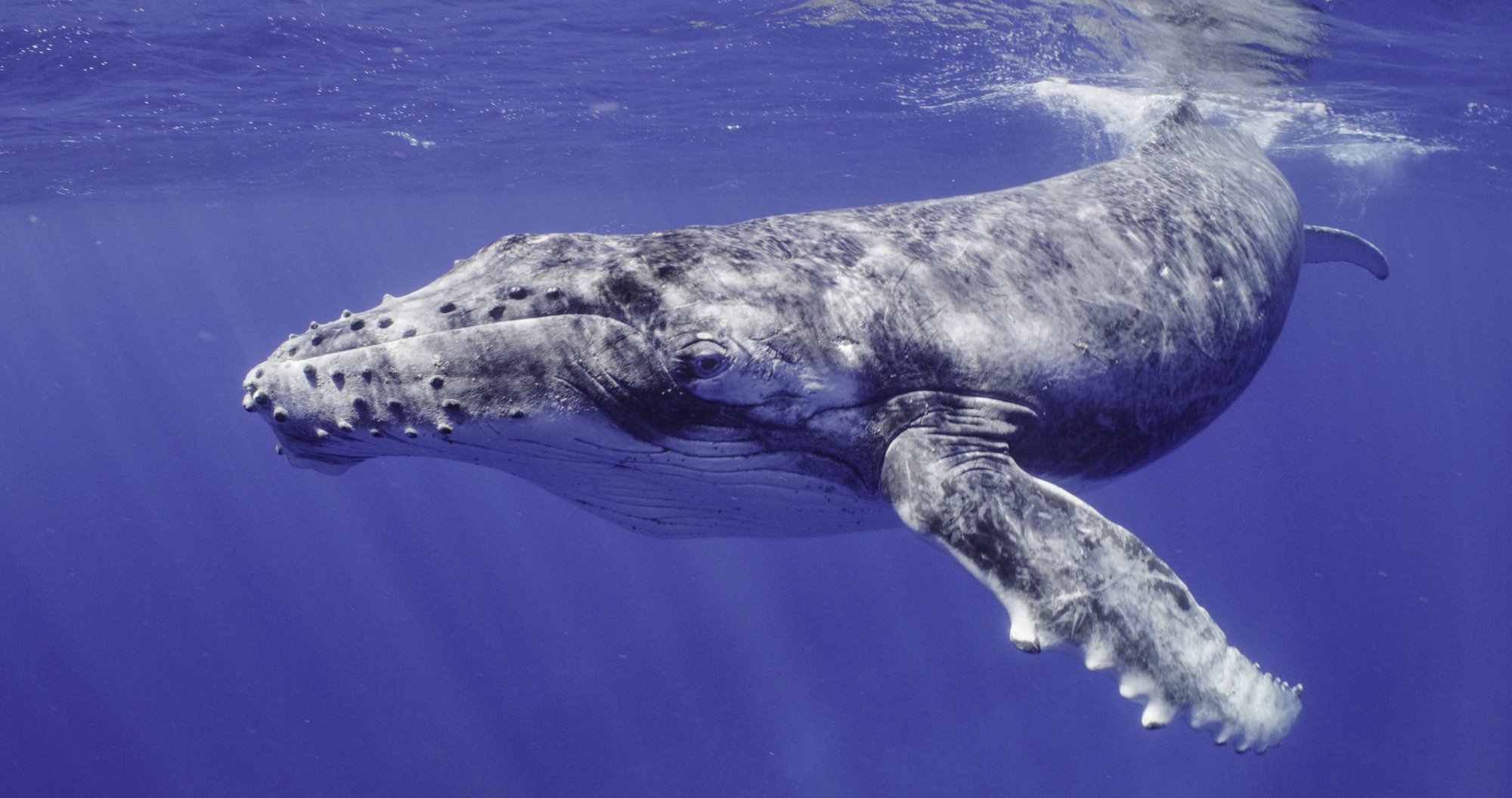The new National Geographic documentary series Secrets of the Whales (which premieres April 22 on Disney+) showcases exotic locations that are home to the large mammals, including the Cook Islands, Argentina, and the Azores. So it may come as a bit of a surprise that the production crew behind the globe-trotting project is based in…Silver Spring?
But it actually makes sense if you’re at all familiar with Red Rock Films. The DC-area company is one of the most prominent producers of nature programming in North America, and is behind a host of wildlife, science, and history content for platforms like Nat Geo Wild, the Smithsonian Channel, Animal Planet, Sesame Studios, and National Geographic Kids.
Red Rock was founded in 2010 by National Geographic veteran Brian Armstrong, and today it counts 12 full-time employees between its Silver Spring headquarters and offices in South Africa and Norway. As it turns out, the DC area is one of the largest hubs for bluechip natural history programming due National Geographic’s presence, says Red Rock senior vice president Shannon Malone-deBenedictis. (The Alexandria-based Malone-deBenedictis is herself a former employee of National Geographic and Discovery Communications, where she worked on Planet Earth.)
And, you know, the animals don’t really care whether you’re flying in directly from Hollywood or not. “The thing about wildlife is we have to go to them, so it doesn’t really matter where we’re based,” she says. “It wouldn’t be more advantageous if we were in New York or LA.”
Secrets of the Whales is a four-episode documentary series that Titanic director James Cameron helped bring to life (Cameron, Armstrong, and Malone-deBenedictis are among the executive producers). It follows five whale species—belugas, narwhals, sperm whales, humpbacks, and orcas—and is narrated by Sigourney Weaver, who also worked with Malone-deBenedictis as the narrator of Planet Earth.
Cameron is an ardent environmentalist and ocean fanatic. “He believes that the best way to protect nature and our planet is to become emotionally connected with them,” says Malone-deBenedictis. “When you care about them and you really understand them, then you’ll be more in line to work to protect them.”
The project has been in the works for more than three years, and came about when National Geographic photographer Brian Skerry was working on a book about whales. He knew the creatures would make for an excellent documentary series, and National Geographic brought on Red Rock to help Skerry make it happen.
One of the most crucial aspects of creating the series was imbuing it with a sense of emotion, says Malone-deBenedictis—allowing viewers to really understand whales’ close-knit communities and almost people-like behavior. “We wanted to make sure that we showed the breadth of these whale cultures, and how it connected to our own culture, to humanity,” she says.

This is hard to accomplish in wildlife filmmaking in general, a genre completely at the mercy of animals’ whims. Sitting in a boat for three weeks to get a one-minute shot is typical. It’s especially difficult when filming creatures as hard to find as whales. And when you do catch up to them, there are natural hazards: While they were filming in Sri Lanka, one creature emitted a whale-sized poop all over the crew that was snorkeling nearby. That’s partly why the project took three years—the crew had to track the seasonal movements of the whales and their migration patterns, and ended up filming in 24 locations across six continents—all for an end result that’s a little under four hours.
That might seem like a lot of legwork, but it’s necessary to get shots that are not only educational, but also tender and beautiful, says Malone-deBenedictis. One scene depicts the first time a sperm whale calf has ever been caught on camera nursing from its mother; another shows an orca mother swimming alongside her dead calf and mourning. “It’s horribly tragic to watch, because there’s no doubt that these whales have the same emotions as other higher intelligent mammals, including us,” says Malone-deBenedictis. “We see these collective things where they work together, or they mourn, or they play, they love—it’s things we all do.”
Malone-deBenedictis likes to joke that her brain is like the wildlife version of the Pensieve in Harry Potter—filled with swirling facts, stories, and research about nature. And it doesn’t appear as if it’s going to get any less crowded. Red Rock is releasing its first Netflix project this summer, an eight-part series about animals, as well as creating content for Discovery’s Shark Week and National Geographic’s Sharkfest. As she puts it, “The wildlife never stops.”




















